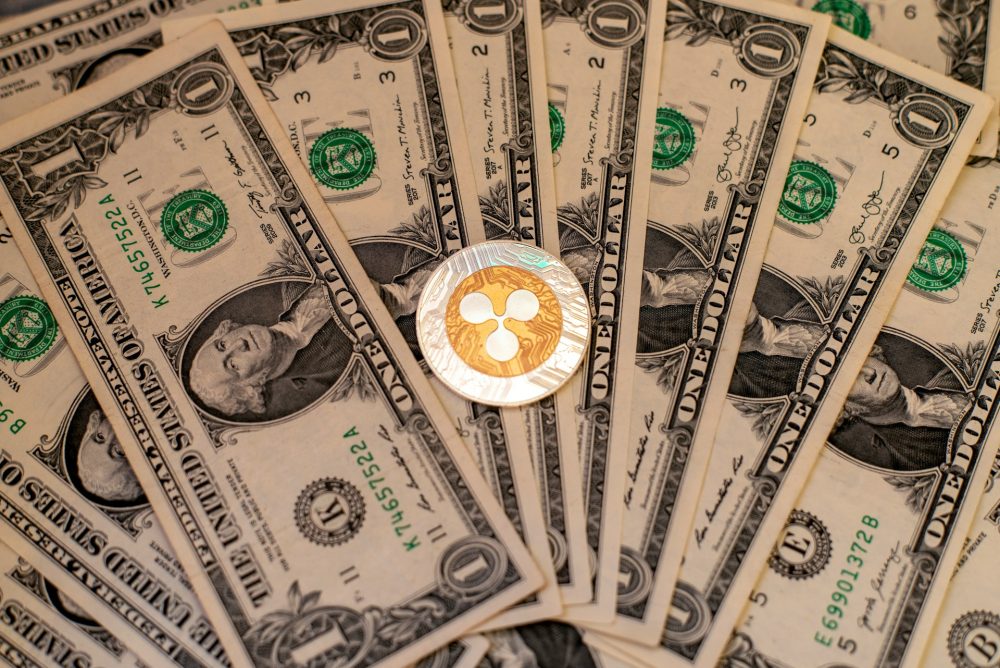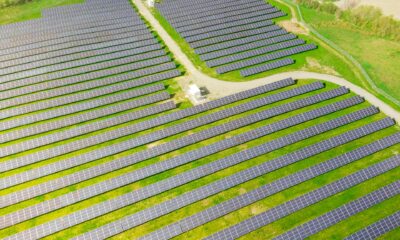Impact Investing
GSS Bond Market Registered 8% Growth in 2024, a Record Year
Green bond issuance reached $561B in 2024, driving the GSS market. Social bonds grew modestly, while sustainability-linked bonds declined. Japan led transition bond growth. Europe dominated issuance, with the EU Green Bond Standard set to boost the market in 2025. ESMA guidelines may reshape compliance, and GSS bond issuance could surpass $1T again.

MainStreet Partners report reveals a bumper 2024 for the Green, Social and Sustainability (GSS) bond market. Global issuance has nearly reached $1 trillion, with total volume exceeding $5.5 trillion.
Leading the way was Green Bond issuance, which recorded its second most dynamic year ever and its first most active quarter, reaching $561 billion, equivalent to 58% of total Green, Social and Sustainability (GSS) bond issuance for the year. This underscores the growing importance of “green” financing in the global financial landscape.
In parallel, Social Bond issuance has recovered, returning to single-digit growth and reaching $251 billion. This is in contrast to Sustainability-Linked Bonds, which have instead suffered a significant decline compared to the previous year. This difference in performance highlights the complexity and diversification of the GSS market, with specific dynamics that influence the different types of bonds.
Another highlight of 2024 was the significant growth in Transition Bond activity, driven in particular by Japanese issuers. These instruments, which finance the transition of carbon-intensive companies and sectors to more sustainable models, are gaining traction in the market. At the end of 2024, 26% of the Japanese GSS bond market consisted of Transition Bonds.
The commitment of the Japanese government, with its first issuance and the announcement of a financing plan of over 20 trillion yen (equivalent to $126 billion) for “Green Transformation” (GX) over the next ten years, will have a significant impact on the future growth of this market segment. The Japanese initiative could serve as a model and stimulate further expansion of Transition Bonds globally.
Alignment to PABs in GSS Bond Funds
The Green, Social and Sustainability (GSS) bond market continues to grow and evolve, with an ever-increasing focus on meeting rigorous environmental standards. The analysis shows that transition bonds achieve a 100% compliance rate with respect to the Climate Transition Benchmark (CTB) while green bonds achieve a compliance rate of around 82% with respect to the Paris Aligned Benchmark (PAB). In particular, non-financial corporates lead the way with 95% compliance with the PAB.
The MainStreet Partners study also highlighted an interesting fact: GSS bond funds show the highest level of alignment with the Paris Aligned Benchmark (PAB) when the investment assessment is performed from the issuer’s perspective. Although ESMA guidelines encourage a detailed analysis of investments, comparing PAB compliance at issuer and project levels reveals significant differences.
These differences arise from the nature of the projects financed and the emission label. Looking at the 10 industries with the highest emissions, we see that in 8 of them, PAB compliance is higher at the emitter level than at the project level. This is because environmentally harmful activities, excluded from PAB, are usually not part of the core operations of these sectors.
This trend, according to the analysis, is reversed in two sectors: alternative energy generation and electric utilities, which have 96% and 90% compliance at the issuer level, respectively, compared to 98% and 92% compliance at the project level. Issuers in these sectors will be more likely to be exposed to the PAB exclusion criteria, particularly with respect to CO2 intensity in power generation.
Furthermore, the two sectors that issue the most GSS bonds, namely government activity and supranational institutions, show the lowest project-level compliance rates, 83% and 75% respectively, while maintaining some of the highest issuer-level compliance rates. “This can be attributed to the nature of the reporting, when compared to their corporate counterparts, which typically contain less granularity, due to the long project lists associated with these issuances, compared to the more focused approach of corporates,” the report states.
EuGBS a boost for the green bond market and GSS Bond
The GSS bond market remains strongly oriented towards Europe, with approximately 60% of the volumes issued by European entities and 56% by bonds denominated in euros. Asia, despite rapidly evolving regulations, maintains a significant presence in the Social and Sustainability bond market. It now holds an equal share of the global GSS bond market to North America and South America combined.
Green, Social and Sustainability (GSS) bonds remain well-established and understood products in the global market, characterised by strong supply from issuers and growing interest from investors, with regulation as a key driver of sustained growth. The introduction of the EU Green Bond Standard (EuGBS), implemented on December 21st, 2024, will bring further impetus to the GSS bond market (especially for green bonds) in 2025.
Despite having a Eurocentric approach to labelling, the EuGBS is somewhat consistent with existing requirements under the ICMA Green Bond Principles, although more prescriptive in some areas (e.g. alignment with the Taxonomy, pre-issuance factsheets and external auditors monitored by ESMA).
For example, ICMA recommends that issuers come to market with transition plans, while EuGBS requires issuers to demonstrate how the use of proceeds fits into the company’s transition plans. Furthermore, the label will be open to any type of issuer from any region, which could incentivize non-European issuers to align their use of proceeds with the highest standards available on the market.
The impact of the new ESMA Guidelines
The report also analyses the effects of the new ESMA Guidelines on the “Paris Aligned Benchmarks (PAB)” and the “Climate Transition Benchmarks (CTB).” These new indications shift the focus from the assessment of the issuer to the analysis of the appropriateness of the use of proceeds, i.e. the projects financed.
MainStreet Partners has analysed the projects financed by each of the 5,000 bonds in its database, noting that this new information is crucial for Article 9 fund managers. The latter, in order to maintain the fund names linked to terminology such as “ESG, Sustainability, Transition”, will have to review their portfolios and modify investments in Green bonds.
The analysis found that over 10% of GSS Bonds could be excluded due to the new PAB disclosure, while nearly 20% of the volume is at risk of exclusion under the more stringent CTB criteria.
GSS Bond Market Outlook 2025
MainStreet Partners expects green, social, sustainability and sustainability-linked bond issuance to surpass $1 trillion again in 2025, supported by a more favorable interest rate environment and investor demand for sustainable investments. But with more than 500 GSS bonds, worth more than $600 billion, maturing by 2026, it will be a question of whether issuers will refinance existing debt.
2025 will also be a pivotal year for the sustainability-linked bonds market, with around 40% of all existing sustainability performance targets (SPTs) set to be met. While transition bonds, which have seen a surge in popularity in 2024, will have a limited role outside of Japan.
Finally, there are two events to keep an eye on: the launch of the EU Green Bond market and the impact of the ESMA guidelines. 2025 will see the birth of the European market dedicated to green bonds with more stringent standards of alignment to the EU taxonomy. In the meantime, the recent ESMA guidelines could create a favorable environment for GSS Bonds, with a “look-through” approach at issue level for PAB/CTB compliance.
__
(Featured image by Chelsea via Unsplash)
DISCLAIMER: This article was written by a third party contributor and does not reflect the opinion of Born2Invest, its management, staff or its associates. Please review our disclaimer for more information.
This article may include forward-looking statements. These forward-looking statements generally are identified by the words “believe,” “project,” “estimate,” “become,” “plan,” “will,” and similar expressions. These forward-looking statements involve known and unknown risks as well as uncertainties, including those discussed in the following cautionary statements and elsewhere in this article and on this site. Although the Company may believe that its expectations are based on reasonable assumptions, the actual results that the Company may achieve may differ materially from any forward-looking statements, which reflect the opinions of the management of the Company only as of the date hereof. Additionally, please make sure to read these important disclosures.
First published in ESG NEWS. A third-party contributor translated and adapted the article from the original. In case of discrepancy, the original will prevail.
Although we made reasonable efforts to provide accurate translations, some parts may be incorrect. Born2Invest assumes no responsibility for errors, omissions or ambiguities in the translations provided on this website. Any person or entity relying on translated content does so at their own risk. Born2Invest is not responsible for losses caused by such reliance on the accuracy or reliability of translated information. If you wish to report an error or inaccuracy in the translation, we encourage you to contact us

-

 Africa1 week ago
Africa1 week agoBLS Secures 500 Million Dirhams to Drive Morocco’s Next-Gen Logistics Expansion
-

 Fintech2 weeks ago
Fintech2 weeks agoRipple Targets Banking License to Boost RLUSD Stablecoin Amid U.S. Regulatory Shift
-

 Impact Investing3 days ago
Impact Investing3 days agoSustainable Investments Surge in Q2 2025 Amid Green and Tech Rebound
-

 Biotech1 week ago
Biotech1 week agoBiotech Booster: €196.4M Fund to Accelerate Dutch Innovation

























